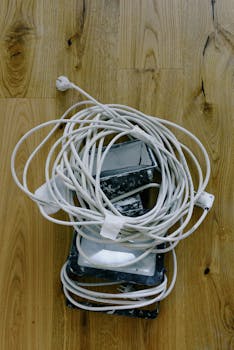Saving Strategies
Practical Grocery Savings: Proven Hacks to Halve Your Food Bill
Slash your monthly food bill with practical grocery savings hacks and proven strategies. Discover actionable steps, organization tips, and smart shopping routines you can use every week for real results.
Advertisement
Walking through packed aisles, it’s easy to toss extras in your cart. Yet most households can double their grocery savings with a few intentional changes rooted in real-world examples and routines.
Monthly food costs are soaring, challenging even the most budget-savvy. Smart planning means you don’t overpay for weekly staples or miss out on easy discounts, achieving lasting grocery savings for your household.
This article shares tactical, straightforward strategies you can try today to cut your grocery bill dramatically. Explore actionable lists, relatable scenarios, and a comparison table to transform your future shopping trips.
Strategic Meal Planning Delivers Predictable Grocery Savings
A streamlined meal plan matches recipes to grocery savings goals. By picking meals upfront, you’ll buy only what you need, avoid takeout, and skip impulse snacks masquerading as essentials.
If you set aside ten minutes each week to plan meals and use a prep list, you’ll notice fewer wasted ingredients. That means reliable savings you can track month after month.
Batch Cooking Builds Resilience Against Busy Schedules
Batch cooking is more than assembling freezer meals—it’s a safeguard when your week derails. Spend one afternoon making double-portion lasagna, stews, or casseroles, and label leftovers for easy reheating.
Say you’re running late after a workday. Instead of defaulting to takeout, you’ll feel relief as you grab a labeled tray from the freezer. This habit shields you from expensive, last-minute food buys.
Start small: pick your family’s favorite chili, double the batch, and freeze half for next week. Next Sunday, test if that single step helped your grocery savings tally.
Theme Nights Help Structure Shopping Lists
Assigning themed nights (like Taco Tuesday or Stir Fry Friday) eliminates daily meal indecision and lets you re-use ingredients. Overlapping vegetables, tortillas, or rice between nights trims both your list and your spending.
Picture your list: spinach and peppers appear twice, reducing midweek waste. This rhythm means you squeeze out every bit from each purchased item, which adds subtle but steady grocery savings.
A realistic script: “Tuesday is tacos, Friday’s fried rice. I’ll buy one bag of peppers, use some in both, then freeze leftovers.” This builds savings into your routine.
| Meal Planning Step | Time Needed | Savings Potential | Action Step |
|---|---|---|---|
| Weekly Recipe List | 10 min | High | Name 3 dinners, share with family |
| Batch Cooking | 90 min | Moderate | Cook double, freeze half |
| Ingredient Crossover | 5 min | Moderate | Mark overlapping produce |
| App List Sync | 7 min | Low | Coordinate with partner |
| Price Check | 5 min | Low | Compare store flyers |
Smart Shopping Habits Slash Unnecessary Expenses
Intentional habits when navigating the grocery store dramatically curb unnecessary purchases. With a list, a plan, and a system, you actively protect your grocery savings every visit.
Sticking to a physical or digital list keeps you focused. Heading straight to your mapped items and skipping “quick glance” detours makes a difference on your receipt every time.
Follow the Outer Aisle First Rule
Outer aisles house fresh produce, dairy, and proteins, while the center often lures with packaged snacks and pricey processed options.
If you start at the store’s edge, you fill your cart with essentials and fresh staples. This lays a strong foundation for real grocery savings, not just penny-pinching.
- Walk the perimeter before entering a central aisle. Your cart fills with nutrient-dense basics, reducing temptations as you finish your route.
- Skip the soft drinks and chips unless planned in advance. Let your list guide your path and say “not this week” to unplanned treats.
- Check endcaps for actual sales, not just clever displays. Remember, sales tags can manipulate your route.
- Choose whole fruits instead of pre-chopped packages for fiber and savings. This one switch reaps big rewards over a month.
- Arrive after a meal. Shopping on a full stomach cuts the urge for snacky detours and nudges up real savings.
These concrete steps empower your wallet and fortify lasting grocery savings with every trip.
Timing Your Grocery Trips Matters
Early morning trips mean shorter lines and sometimes fresher markdowns on items nearing their sell-by date.
If you can shop midweek, you might catch stores rotating stock or marking down slow sellers. Snagging discounts during these times gives a silent boost to your savings streak.
- Go early if you want first pick at produce and bakery markdowns. The best deals rarely last past noon.
- Shop on Tuesday or Wednesday for reset sales and midweek specials. Many store flyers switch over midweek.
- Check clearance bins after holidays or events, but avoid impulse buys. Add to your long-term pantry when prices are genuinely low.
- Buy close-dated yogurt or meat if you can use them quickly—label and freeze to avoid spoilage.
- Use a price history sheet for your staples. If ground turkey drops below your usual threshold, stock up.
Adding these tactics to your routine means more funds redirected to your actual goals, not extra groceries.
Optimizing Pantry Staples Prevents Duplicate Purchases
An organized pantry is your first defense against overspending. Keeping shelf basics sorted, visible, and inventoried lets you stop duplicate buys and build meals from what you already own.
Imagine scanning your shelf and realizing you still have two bags of rice and three cans of beans. That insight, multiplied weekly, drives subtle but real grocery savings over the year.
Seasonal Rotation Keeps Ingredients Fresh
Rotate canned and boxed goods to the front each month. Place new buys at the back so nothing gets buried or expires out of sight, preserving your investment.
For example, jot down “March: check soups, April: rotate pasta.” As you swap older items forward, you’ll naturally use what’s near expiration—and your dollars stretch further.
This system fits busy lives. Five minutes spent monthly updating your inventory list delivers steady grocery savings just by preventing waste.
Cross-Reference with Recipes Weekly
After meal planning, physically compare your pantry checklist with chosen recipes. Cross off any staples you already own so you don’t double up at the store.
Let’s say you find enough black beans for another taco night. Update your grocery list, saving both money and storage space for future finds.
Consistently matching your pantry to recipes streamlines trips and protects your bottom line, trip after trip.
Bulk Buying and Storage Tactics Multiply Savings
Buying in bulk makes sense when you’ve assessed your storage and consumption pace. Real grocery savings emerge when bulk purchases match real needs—not just sale prices.
Scout warehouse deals on staples like flour, oats, or frozen vegetables, but split large packages with a friend when your home storage is tight. Sharing the cost means double value without risk of waste.
Labeling and Portioning Goods Right Away
Back home, immediately transfer bulk dry goods into airtight containers, label them with the buying date, and note the “use by” window—this helps avoid forgotten shelf stock.
Divide bulk meat into meal-sized freezer packs with masking tape labels: “Chicken, Apr 14.” Defrost only what you need for a weeknight supper so nothing spoils in the fridge.
A simple script: “Label half these oats for breakfast, the rest for baking.” Keeps your bulk savings active throughout the month.
Assessing Sale vs. Usability Before Buying
Always pause before stocking up just because an item’s on sale. Will your family actually use two jumbo ketchup bottles before next year?
Create a quick checklist: Can I store it safely, finish it in time, and substitute it in different recipes? Try “Freeze half” or “Incorporate into two weekly meals.”
Your savings grow only when each deal aligns with your real meal patterns, not just your shopping enthusiasm.
Couponing and Loyalty Programs Enhance Grocery Savings
Loyalty cards and digital coupons directly add up, delivering grocery savings with minimal time investment. Setting up app alerts for frequent needs means less research and more automatic discounts.
Picture saving extra each time you scan your card, stack digital coupons, or redeem store rewards. These habits build year-round momentum for grocery savings without extra mental load.
Stacking Digital and Print Coupons for Maximum Discount
Before checkout, combine digital offers loaded to your loyalty account with manufacturer paper coupons if your store allows stacking. Ask the cashier to scan your phone barcode, then present any remaining printed offers.
Scan the weekly store flyer for overlapping sales and coupon products. Example: Yogurt on sale, digital offer plus paper coupon, total discount $2.25. Stack for maximum savings.
Use your savings log to track which brands or items yield the best deals—then repeat successful matchups every few months.
Leverage Seasonal Promotions for Stock-Ups
Retailers roll out deep discounts around holidays or back-to-school periods. Watch flyers or set calendar reminders: Thanksgiving canned goods, July grilling meats.
Build shopping trips around these cycles. “I’ll double up on pasta during the back-to-college sale and freeze half.” This habit creates a pantry buffer and amplifies grocery savings.
Next, strategize combining holiday discounts with printable coupons for double benefits, noting which brands cycle deals each year.
Consistent Price Tracking Strengthens Your Bargaining Power
Recording your most-purchased items’ standard prices clarifies what’s truly a deal versus normal pricing. A simple spiral notebook or budget app keeps your data handy in every aisle.
Try this process: note everyday prices for staples like milk, chicken, and oats for four weeks. Next month, compare ad “sales” and buy only when real discounts appear, not just marketing.
Create a Personal Price Book
A personal price book can be low-tech—a small notebook or spreadsheet—or use mobile note apps. Log the size, price paid, and store for your 15 top items.
If you spot 16-ounce pasta for $1 at Store A but $1.40 at Store B, that clear record lets you plan weekly stops for maximum grocery savings. Don’t rely on memory—rely on your data.
Your price book reveals true baseline prices, helping you skip “deals” that aren’t really deals.
Respond Quickly to Unexpected Sales
Set aside a “flex” portion of your budget for one-off, genuine markdowns. For example, marked-down organic chicken packs you spot unplanned.
With your price book and budget, you’ll spot these steals, stock up guilt-free, and pass on what doesn’t meet your price point. This flexibility is a secret weapon for rookie and advanced grocery savings fans alike.
By learning your store’s clearance routines—like milk marked down after noon—you amplify those surprise scores without busting your monthly plan.
Making It Stick: Putting Grocery Savings Strategies into Daily Practice
Real change means turning habits into routines, not just trying tips one time. Each week, reflect on what worked, what you skipped, and where the process felt easy.
Team up with a friend or neighbor to share bulk purchases, trade freezer meals, or test new recipes together. Social reinforcement cements your path toward dependable grocery savings with less effort over time.
Build check-in reminders for your meal planning and pantry rotation. Even a quick once-a-month review keeps your household on track and cuts missed opportunities. These moments compound, yielding notable savings each year.
Frequently Asked Questions
What are the easiest ways to save at the grocery store right now? Make and stick to a grocery list, plan meals before shopping, check your pantry first, use digital coupons, and buy store brands. Try tackling one tactic each week to build habits gradually.
How can I keep my fresh produce from going bad before I use it? Buy produce you’ll realistically eat in a week, store it properly (greens in sealed bags, mushrooms in paper), and prep or freeze excess immediately. Prep a produce drawer meal list to use up extras first.
Are warehouse club memberships worth it for small households? Only buy in bulk what you use regularly and have space to store. Split big packages with friends or neighbors. Track real savings after factoring in annual fees and time spent shopping there.
How do I avoid impulse buys at the grocery store? Eat before you shop, carry a written list (not just digital), and stick to only aisles needed for your list. Check endcaps and “specials” only if you truly need those items. Challenge yourself to one no-impulse trip monthly.
What’s the best app or tool for meal planning and grocery tracking? Any tool that fits your habits—simple notes, calendar reminders, or purpose-built grocery apps—works. The key is consistency. Review your list before each trip, and use a price log for your most common staples to spot real deals.





